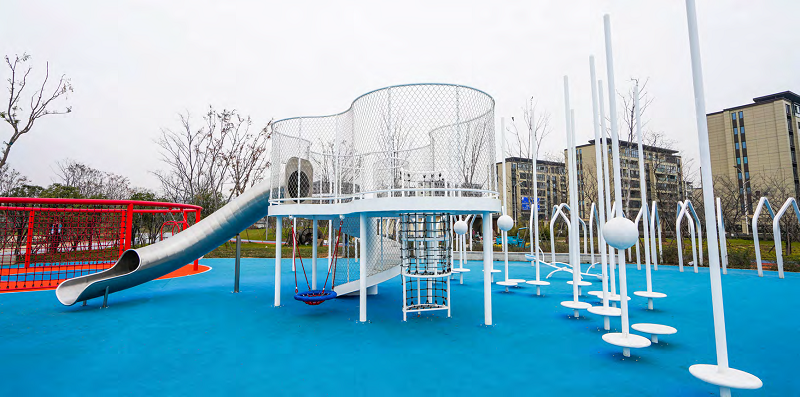The design of an outdoor theme park is a complex and creative endeavor that requires a number of guidelines to be followed to ensure a safe, fun and memorable experience for visitors.
First and foremost, safety is the most important guideline. During the design process, the structure, materials and installation of the rides must be strictly controlled. For example, the slope and height of slides should comply with safety standards to avoid accidents to children during use. Adequate protective facilities, such as guardrails and buffer pads, should be installed around the perimeter of amusement rides to minimize the risk of injury. At the same time, it is important to ensure that the ground material has good anti-slip properties, especially in wet weather conditions.
Secondly, functionality is the basis of design. Visitors of different ages have different needs and abilities, so the park should be divided into different areas to provide amusement programs suitable for each age group. For example, simple climbing facilities and swings should be set up for young children, while more challenging high ropes projects and skateboarding areas should be provided for teenagers. The needs of visitors with disabilities should also be taken into account with barrier-free access and facilities to ensure that everyone can enjoy the park.

Thematicity is at the heart of an outdoor theme park. A well-defined and unique theme attracts visitors and gives them an immersive experience. Themes can be based on fairy tales, history and culture, natural landscapes, etc. For example, a forest-themed park can create rides that mimic the shape of trees and set up interactive programs related to forest animals, making visitors feel as if they are in a mysterious forest. In the design, it is important to ensure that the theme elements are carried through, from the architectural style, landscape layout to the name and design of the rides, can be closely centered on the theme.
Landscape design is also a guideline that cannot be ignored. A beautiful natural landscape can enhance visitors' pleasure and comfort. Diverse plants can be planted to create different scenery in all seasons. Reasonable planning of the water system, such as streams and ponds, increases the spirituality of the landscape. At the same time, landscape design should be integrated with amusement facilities to form a harmonious and unified whole.
In addition, sustainability is also an important consideration in modern outdoor theme park design. Select environmentally friendly materials, reduce energy consumption, rationally plan the use of water resources and so on. For example, solar energy is utilized to power some of the facilities, and rainwater collection systems are constructed for irrigating plants.
Interactivity and participation are essential to enhance the visitor experience. Design some game projects that require visitors to complete together, or set up interactive landscape installations, so that visitors can interact with the park, rather than just passively watching and playing.
Finally, focus on humanized service facilities. Provide adequate rest areas, clean restrooms, food and beverage vending points, etc. Resting areas should be set up in the shade and equipped with comfortable seats. Restrooms should be designed to be convenient for children and people with disabilities.
In conclusion, the design of an outdoor theme park requires comprehensive consideration of guidelines such as safety, functionality, theme, landscape design, sustainability, interactivity and humanized service. Only by following these guidelines can a popular and long-lasting outdoor theme park be created.
+86-13566236059
#16 Chuangqiang Road, Light industrial area, Lucheng district, Wenzhou city, Zhejiang Province, China.
+86-577-85951908
+86-577-86457291
